Stepping off the train in Nuremberg, I was immediately struck by how this German city perfectly balances its profound historical significance with festive charm. The medieval Old Town, with its imposing stone walls and cobblestone streets, serves as both a testament to centuries gone by and the backdrop for one of Germany’s most magical Christmas experiences.
Nuremberg hosts the oldest and largest Christmas markets in Germany. The markets transform the city center into a winter wonderland of twinkling lights, handcrafted ornaments, and the irresistible aroma of mulled wine and gingerbread.
My exploration of Nuremberg took me through layers of history—from medieval castles to sobering World War II sites—all within walking distance of each other. The traditional Christmas markets, which begin the Friday before the first Sunday of Advent, offered a perfect contrast to these deeper historical reflections.
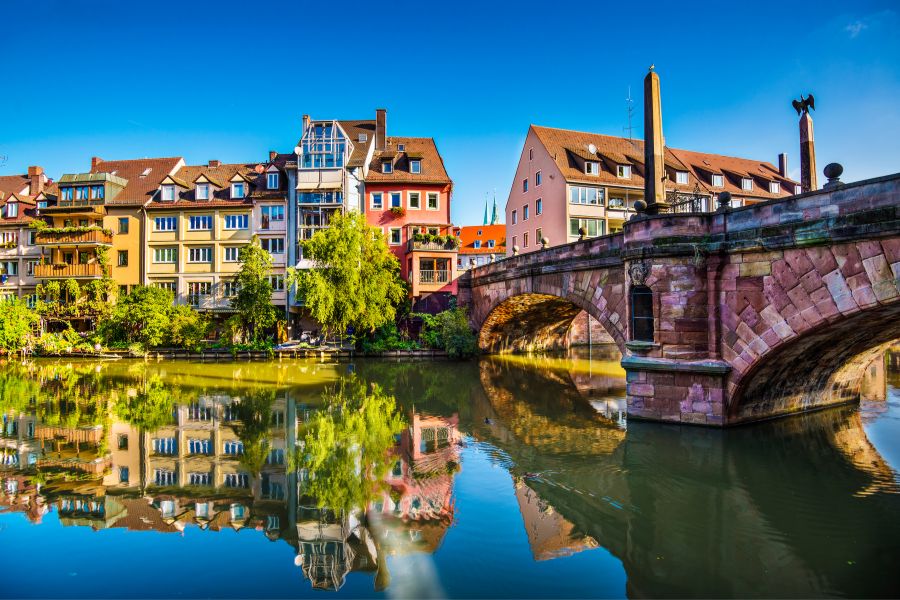
Local craftspeople sell authentic handmade treasures rather than mass-produced souvenirs, making this market stand out from others I’ve visited across Europe.
Wandering through the stalls set up in the main square, I found myself captivated by the genuine warmth of Nuremberg’s holiday traditions. The famous Nuremberg gingerbread (Lebkuchen) became my daily treat as I explored the city’s impressive architecture. What makes Nuremberg truly special is this remarkable blend—a place where you can contemplate humanity’s darkest moments in the morning and celebrate its brightest traditions by afternoon.
Stepping into the Past: Nuremberg’s Historic Charm
Walking through Nuremberg feels like traveling back in time. The city’s well-preserved medieval architecture and historic sites tell stories of imperial power, artistic achievement, and cultural significance that span centuries.
Nuremberg’s Medieval Old Town
The heart of Nuremberg, its Old Town (Altstadt), captivated me with its timber-framed buildings and cobblestone streets. Despite heavy damage during World War II, much of the area has been carefully restored to maintain its medieval character.
I spent hours wandering through narrow lanes lined with red-roofed houses and artisan shops. The city walls, which stretch for about 5 kilometers, still encircle much of the Old Town with their impressive towers and gateways.
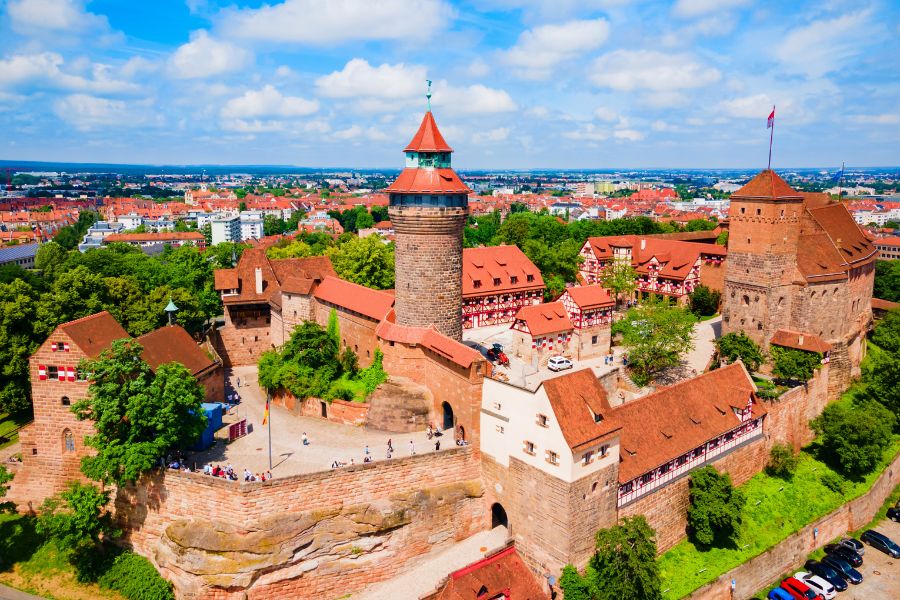
The Craftsmen’s Courtyard (Handwerkerhof) was a delightful discovery. This small village-like area houses traditional craft workshops where artisans create and sell handmade goods just as they did centuries ago.
Strolling through the Hauptmarkt
The Hauptmarkt, Nuremberg’s central square, serves as the city’s vibrant hub. This sprawling marketplace has been the center of city life since the Middle Ages.
The Beautiful Fountain (Schöner Brunnen) stands 19 meters tall and features 40 colorful figures representing the worldview of the Holy Roman Empire. I joined other visitors in spinning the brass ring for good luck!
Dominating the eastern edge is the stunning Frauenkirche (Church of Our Lady), built in the 1350s. Its mechanical clock display, the “Männleinlaufen,” attracts crowds daily at noon when figures representing the seven electors parade around Emperor Charles IV.
During December, this square transforms into the world-famous Christkindlesmarkt, but even outside the holiday season, it buzzes with cafés and local vendors.
The Imperial Castle’s Commanding Presence
Perched on a sandstone ridge overlooking the city, Nuremberg’s Imperial Castle (Kaiserburg) offered me breathtaking panoramic views. This fortress served as one of the most important imperial palaces during the Holy Roman Empire.
The complex includes the Knight’s Hall, Imperial Chapel, and Deep Well, each telling part of the castle’s 900-year history. I was particularly impressed by the Double Chapel with its remarkable Romanesque architecture.
The castle’s Imperial Museum houses an impressive collection of medieval artifacts, weapons, and royal treasures. I spent nearly two hours exploring the exhibitions that document the castle’s significance as a symbol of imperial power.

From the castle grounds, I could see the twin spires of St. Lorenz Church (Lorenzkirche) rising above the city skyline – another magnificent landmark worth visiting.
A Celebration of Yuletide: Nuremberg’s Festive Markets
Nuremberg’s Christmas markets transform the city into a winter wonderland each year, offering a perfect blend of tradition and festive cheer that dates back to the 16th century. The aroma of spices and sweet treats fills the air as locals and tourists alike gather to experience this magical celebration.
The Magic of Christkindlesmarkt
The Nuremberg Christkindlesmarkt is Germany’s most famous Christmas market, and it’s easy to see why. I was immediately captivated by the sea of wooden stalls adorned with red and white striped awnings. The market square glows with thousands of twinkling lights, creating a magical atmosphere I won’t soon forget.
Traditional Christmas carols float through the air, adding to the enchanting ambiance. I found myself humming along as I wandered through the bustling marketplace. The centerpiece of the market is the Christkind, a local young woman dressed as the gift-bringing angel figure who officially opens the festivities.
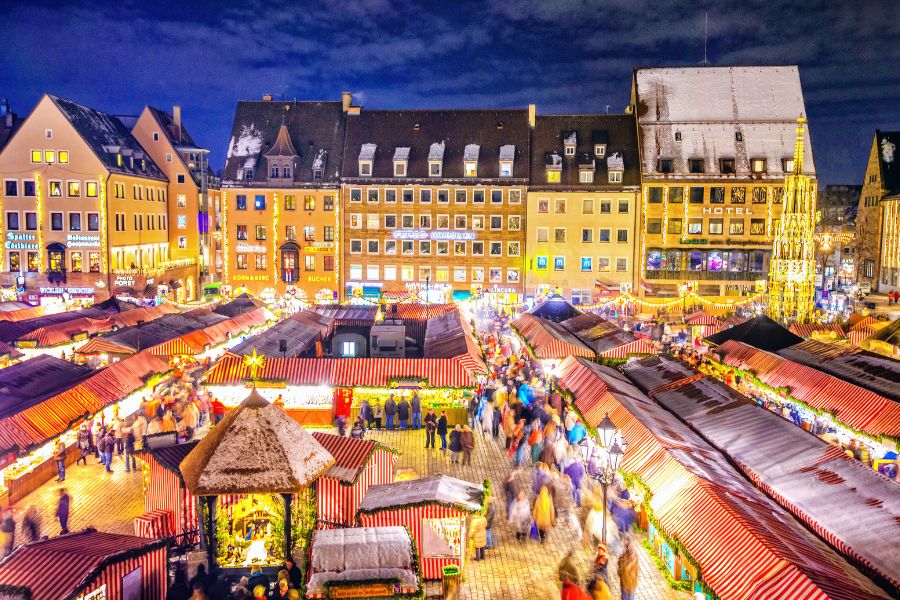
What makes this market special is how it honors centuries-old traditions. Unlike modern commercial events, Nuremberg strictly maintains authentic craftwork and decorations. Even the stalls themselves follow historical designs, creating a truly immersive experience.
Shopping and Souvenirs: Crafts and Gifts Galore
The market offers a treasure trove of handcrafted items that make perfect gifts or souvenirs. I discovered intricately carved wooden ornaments, each telling its own story through detailed craftsmanship.
Local artisans proudly display their wares, from hand-painted Christmas decorations to delicate glass ornaments that catch the light beautifully. Many craftspeople work right at their stalls, allowing visitors to witness their impressive skills firsthand.
My favorite finds included:
- Hand-carved wooden nutcrackers
- Intricate glass baubles
- Handmade woolen scarves and gloves
- Traditional wooden toys
- Beeswax candles with festive scents
I especially loved the “Prune Men” (Zwetschgenmännle) – quirky figurines made from dried fruits that serve as unique Nuremberg souvenirs with a history dating back centuries.
Culinary Delights: From Gingerbread to Mulled Wine
The aromas at Nuremberg’s Christmas market are simply irresistible. I couldn’t resist trying the famous Nuremberg lebkuchen (gingerbread), which has been baked here since the 14th century using traditional recipes.
The market’s signature treat is the small, thin Nuremberg bratwurst. These delicious sausages are grilled to perfection and served three in a roll – a local speciality I enjoyed multiple times during my visit.
No Christmas market experience is complete without glühwein (mulled wine). I warmed my hands around a decorative mug of this spiced wine, savoring its cinnamon and clove notes as I watched snowflakes dance in the evening air.
Other must-try treats include:
- Fruit-studded stollen (Christmas cake)
- Gebrannte mandeln (sugar-roasted almonds)
- Hot apple cider for non-alcohol drinkers
- Freshly baked pretzels
- Spekulatius (spiced shortbread cookies)

Culinary Journey through Nuremberg: A Food Lover’s Paradise
Nuremberg’s food scene combines centuries-old traditions with seasonal specialties that delight the senses. During my visit, I discovered a city where culinary heritage is preserved with pride and passion.
Savoring Nuremberg’s Traditional Bratwurst
The Nuremberg bratwurst quickly became my favorite local delicacy. These small, finger-sized sausages are unlike any others I’ve tried—packed with marjoram and other secret spices that give them their distinctive flavor.
I ordered the famous “Drei im Weggla” (three in a bun) from a busy stall near the main square. The vendor expertly grilled them over an open beechwood fire, creating that perfect snap when I bit into them.
What makes these sausages special is their protected status—they must be made within the city limits and follow strict size requirements (no longer than 9 cm).
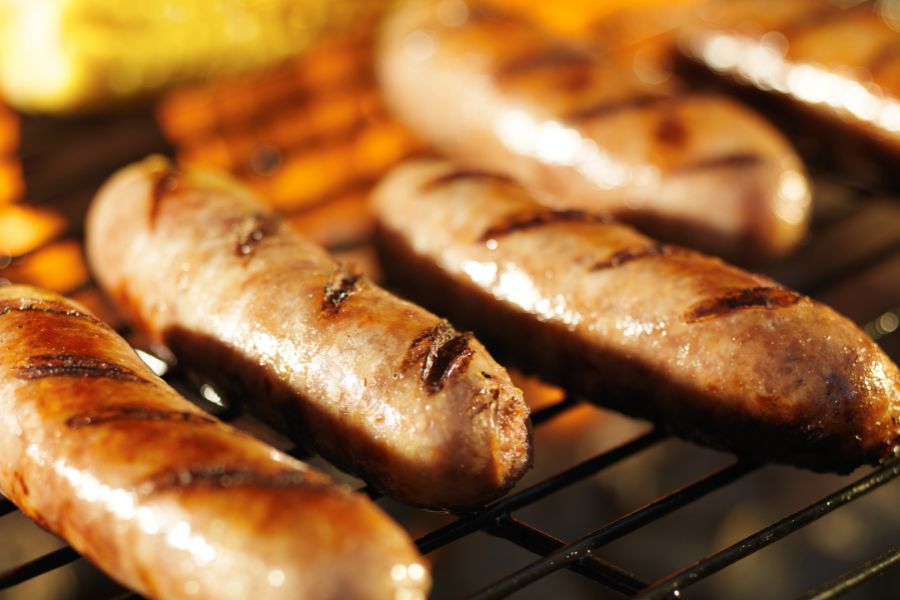
For the authentic experience, I visited the historic Bratwursthäusle restaurant where they’ve been serving these delicacies since 1313. The sausages arrived with tangy sauerkraut and a dollop of spicy mustard—simple yet utterly satisfying.
Sweet Treats: Lebkuchen and the Art of Gingerbread
Nuremberg’s lebkuchen (gingerbread) tradition dates back to medieval times, and I couldn’t wait to sample these famous treats. During the Advent season, the aroma of spices filled every corner of the Christmas Market.
The original Elisenlebkuchen impressed me most—made without flour and packed with almonds, hazelnuts, candied orange peel, honey, and a secret blend of spices. Each bite offered layers of flavor and just the right amount of sweetness.
I visited a fifth-generation bakery where I watched artisans carefully decorating these treats. Some were dipped in dark chocolate, others topped with sliced almonds or decorated with intricate icing designs.
The baker explained that authentic Nuremberg lebkuchen must contain at least 25% nuts and have earned a protected geographical status. I bought a decorative tin filled with assorted varieties to enjoy long after my trip ended.
Local Beverages: Glühwein and Feuerzangenbowle
No winter visit to Nuremberg would be complete without warming up with the local hot drinks. The Christmas Market stalls offered steaming mugs of glühwein (mulled wine) that became my evening ritual.
The rich red wine mixed with cinnamon sticks, cloves, star anise, and orange slices created a perfectly balanced drink that warmed me from the inside out. Each market stall offered slightly different recipes, and I enjoyed comparing them.
For a truly memorable experience, I tried feuerzangenbowle—a dramatic drink where a rum-soaked sugar cone is set ablaze and drips into the mulled wine below. The ritual surrounding this drink was as enjoyable as the caramelized flavors it created.
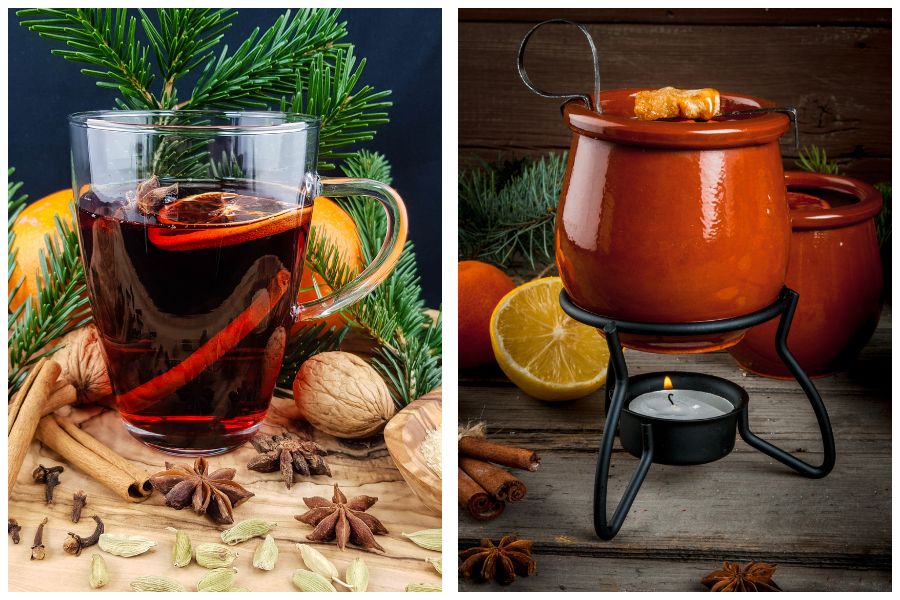
Many locals shared that these warm drinks are central to the Advent season celebrations. I found myself returning to my favorite stall each evening, collecting the decorated mugs as souvenirs of my culinary adventures through Nuremberg.
Adventurous Explorations: Nuremberg’s Surrounding Wonders
Nuremberg serves as the perfect base for exploring Bavaria’s treasures. Within a short drive or train ride, I found myself wandering through medieval towns, magnificent palaces, and breathtaking landscapes that complement Nuremberg’s own rich history.
Day Trips along the Romantic Road
The Romantic Road offers some of Germany’s most picturesque scenery just outside Nuremberg. This famous route stretches about 350 kilometers from Würzburg to the Alps, featuring charming towns that seem frozen in time.
My journey along this historic route revealed cobblestone streets and half-timbered houses that transported me back to medieval Germany. The road follows ancient trade routes that once connected important imperial cities.
I recommend renting a car for maximum flexibility, though guided tours from Nuremberg are also available. The driving is easy with well-marked roads and ample parking in most towns.
Several spots along the Romantic Road make perfect day trips from Nuremberg, with each town offering unique architecture, local foods, and craft shops selling regional specialties.
Visiting the Spectacular Würzburg and Bamberg
Würzburg captivated me with its magnificent Residence Palace, a UNESCO World Heritage site. This baroque masterpiece features the world’s largest ceiling fresco, created by Venetian painter Tiepolo.
The city sits along the Main River, surrounded by vineyards producing excellent Franconian wines. I spent hours exploring the old stone bridge with its saint statues and enjoying local wine at riverside cafés.
Just 40 minutes from Nuremberg, Bamberg offers another UNESCO treasure. This perfectly preserved medieval city escaped WWII bombing, leaving its architecture intact.
I wandered through “Little Venice,” where colorful fishermen’s houses line the water. Bamberg’s smoked beer (Rauchbier) is a must-try specialty, with a distinctive flavor from malted barley dried over beechwood fires.
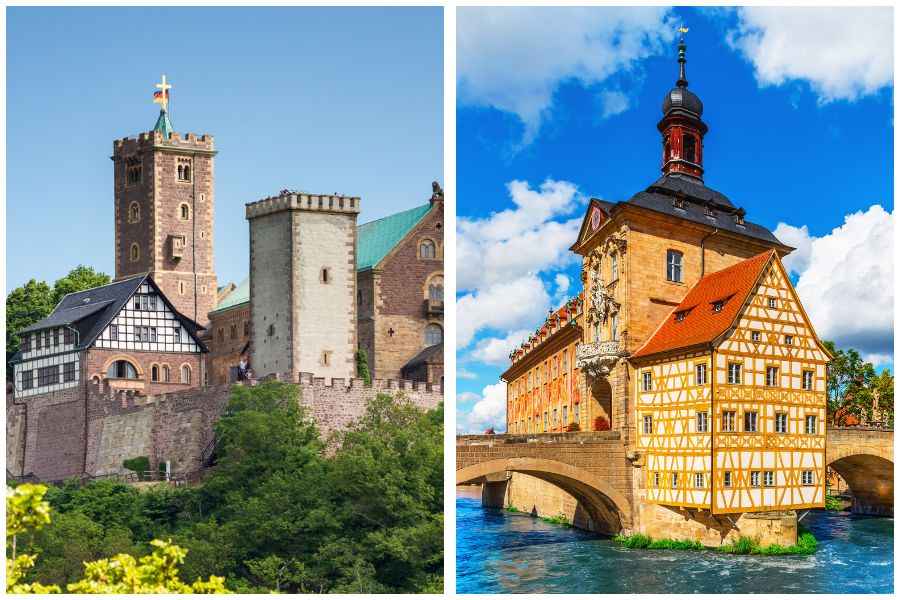
The cathedral houses the tomb of Emperor Henry II and his wife Kunigunde, plus the famous Bamberg Rider statue.
The Fairytale Setting of Rothenburg ob der Tauber
Rothenburg ob der Tauber feels like walking into a storybook. This walled medieval town sits perched above the Tauber River valley, offering the Germany of your imagination.
I arrived early to beat the tour buses and wandered the quiet morning streets. The town’s preserved medieval walls can be walked in their entirety, providing spectacular views of red-roofed buildings and the surrounding countryside.
Rothenburg celebrates Christmas year-round at Käthe Wohlfahrt’s Christmas Village, where I found handcrafted ornaments and decorations. The Medieval Crime Museum offers a fascinating (if somewhat macabre) look at justice systems of the past.
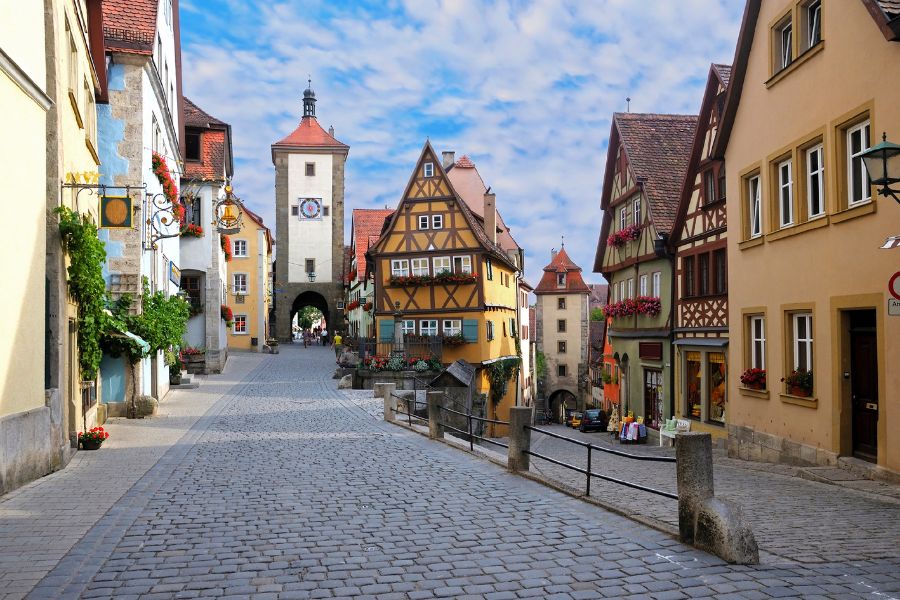
Don’t miss the town’s signature pastry, Schneeballen (“snowballs”) – ball-shaped shortcrust pastries covered in powdered sugar or chocolate. I climbed the Town Hall tower for panoramic views that made the steep stairs worthwhile.
Practical Tips for the Traveler: Navigating Nuremberg
Nuremberg is a city that rewards good planning but also leaves room for spontaneous discoveries. I’ve found that knowing the basics about transportation, where to stay, and when to visit can make your experience much more enjoyable.
Transportation: Getting Around the City
The public transportation system in Nuremberg is excellent and tourist-friendly. I recommend getting the Nuremberg Card. The card includes unlimited travel on buses and trams plus free entry to many museums.
The U-Bahn (subway) connects all major attractions and runs frequently. Line U1 is particularly useful as it takes you to the Altstadt (Old Town) where most historical sites are located.
For exploring the compact city center, walking is my preferred option. Most attractions in the Altstadt are within a 15-minute walk of each other. You’ll discover charming side streets and hidden gems along the way.
Taxis are readily available but not necessary unless you’re heading to outskirts or have mobility issues. Bike rentals are also popular in warmer months, with dedicated lanes throughout the city.
Accommodations: Finding Your Home Away from Home
I’ve found staying near the Altstadt gives the best experience, especially during the Christmas market season. Hotels like Hotel Drei Raben and Hotel Victoria offer central locations with easy access to Rathausplatz.
Budget options:
- Youth hostels near the main station
- Airbnb apartments in Gostenhof (hipster area)
- Budget hotels in St. Johannis neighborhood
Mid-range to luxury:
- Sheraton Carlton (near train station)
- Le Méridien Grand Hotel (historic luxury)
- Hotel Elch (charming boutique option)
Book at least 3-4 months ahead if you’re visiting during the Christkindlesmarkt in December. Prices can double and availability becomes extremely limited.
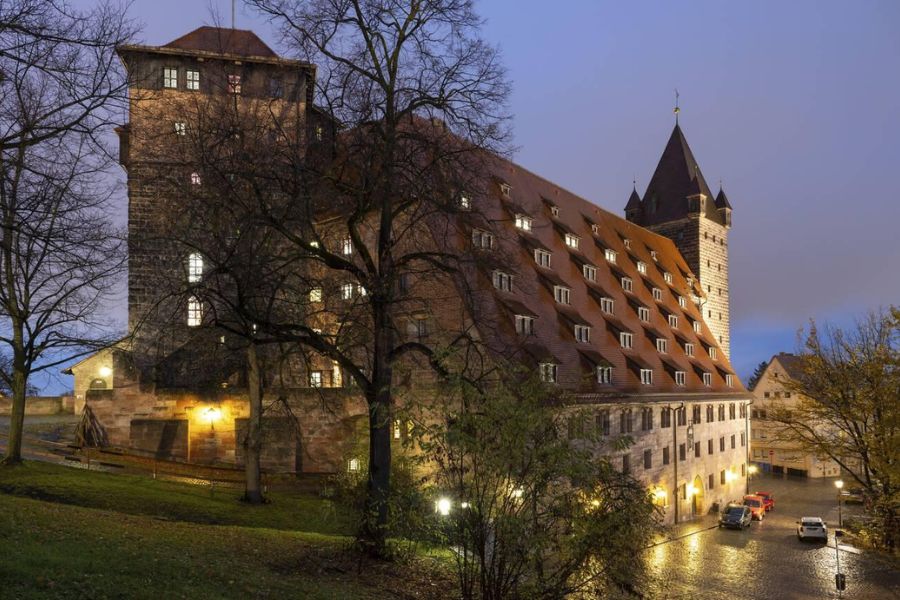
The area around Hauptmarkt tends to be noisy during market season, so request a room away from the street if you’re a light sleeper.
When to Visit: Timing Your Nuremberg Experience
The Nuremberg Christkindlesmarkt (late November to December 24th) is magical but extremely crowded. I recommend visiting mid-week mornings to avoid the biggest crowds while still enjoying the holiday spirit.
Summer (June-August) brings pleasant weather perfect for outdoor exploration. Though temperatures can occasionally reach the high 80s°F. The city hosts various festivals during this time, adding cultural experiences to your trip.
Spring and fall offer fewer tourists and mild weather. May and September are my personal favorites. The Altstadt looks beautiful with either spring blooms or autumn colors.
If possible, avoid school holidays in Bavaria. Attractions like the carousel and Ferris wheel near the Christmas market become particularly busy with local families enjoying the nativity scenes and festivities.

